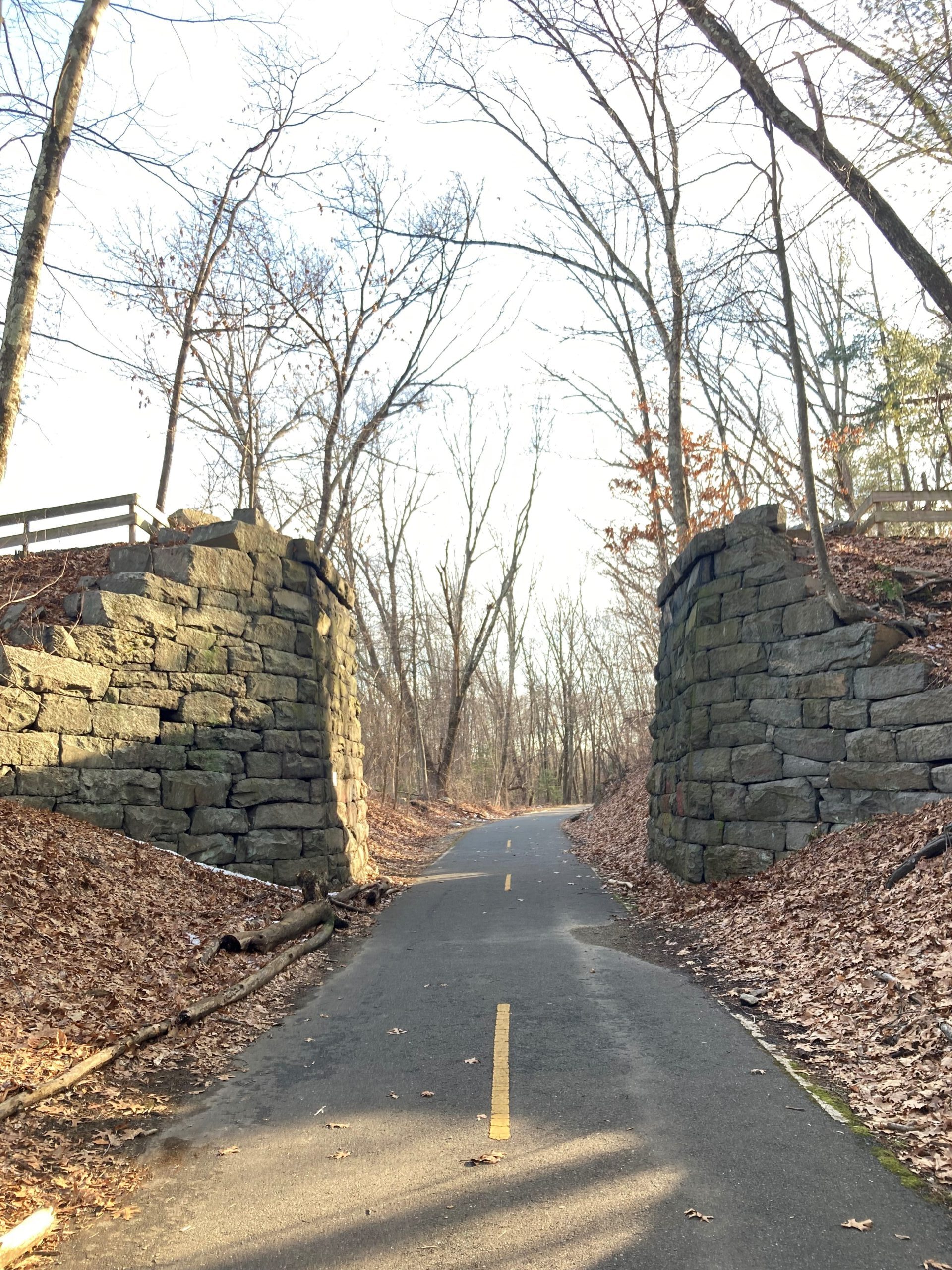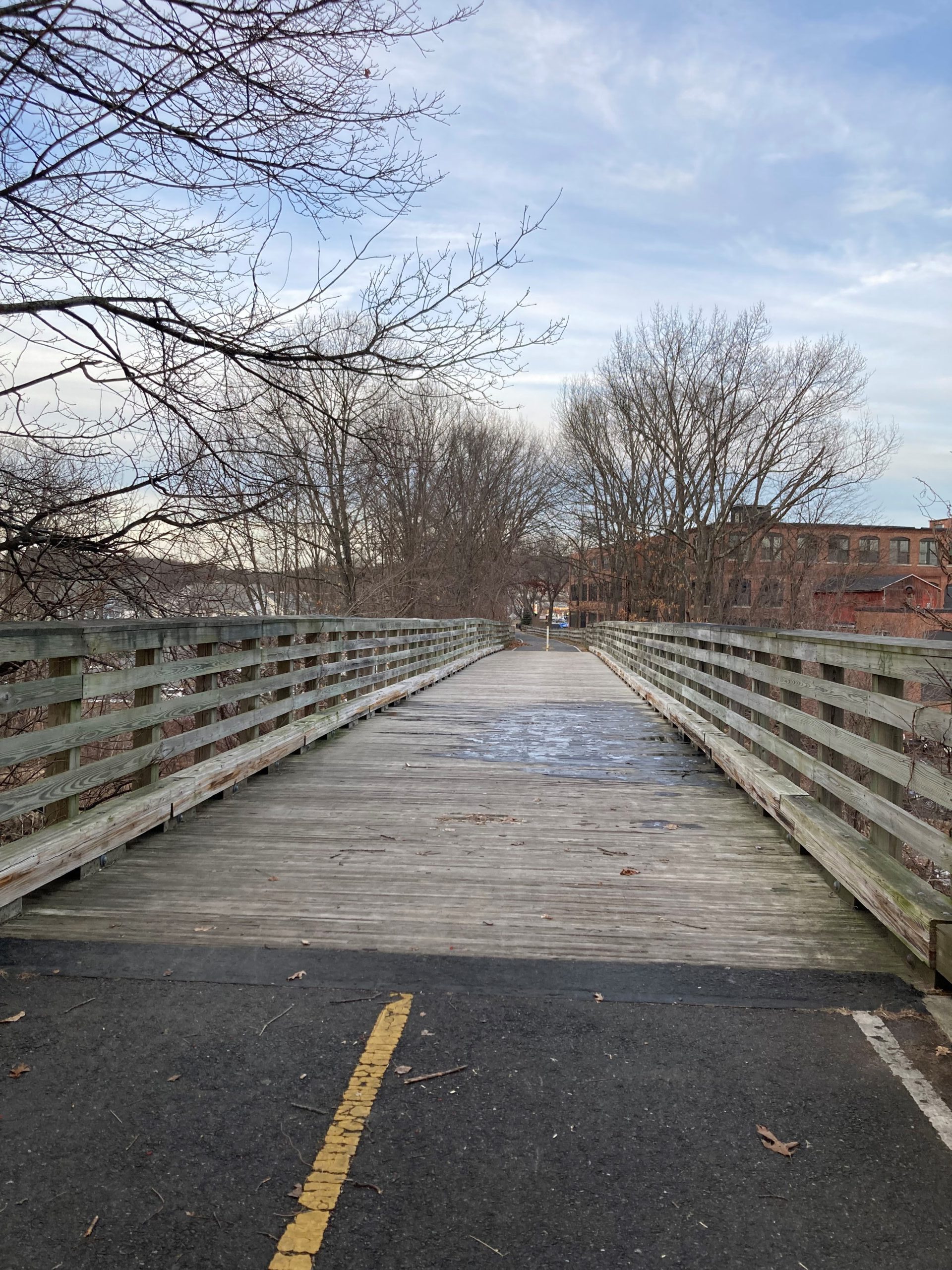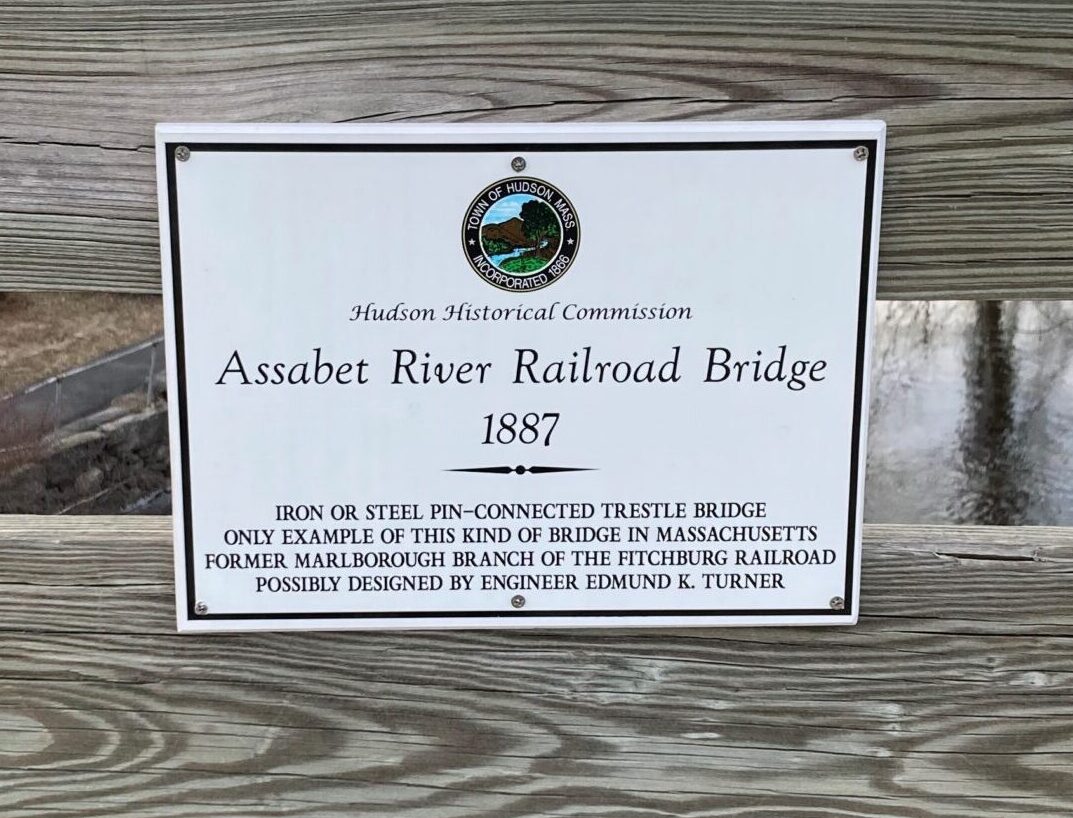Instead of the scream of a fish hawk scaring the fishes, is heard the whistle of the steam-engine, arousing a country to its progress.
-Henry David Thoreau
The weather warmed, providing temperatures into the high forties. Waldo and I are out on our daily trek and it’s a pleasant walk now — I only have to wear a jacket and a ski cap to be comfortable. These balmy days are ideal for Waldo — not cold at all and not warm enough that he needs water along the way. Apparently, things have softened enough for others, besides the regulars, to appear here. Though there still aren’t as many people out on the trail as there are in the spring and summer, there are more than the handful of brave souls who venture out in wintery conditions. Mother Nature sleeps on and doesn’t seem to be confused by the early warming trend, though (with the notable exceptions I’ve mentioned before in other posts). The oaks, maples, birches and the other deciduous trees are naked and bony and the weeds have withered and dried up into delicate sticks, as all wait for the real spring yet to come.
As we trek along, Waldo deviates from his perpetual search for the ultimate stick and, looking for pets and pats, saunters up to a gentleman sitting on a bench. The bench is located at an overlook where Fort Meadow Reservoir and the abutting community can be enjoyed in all their beauty. Large houses are ensconced on the distant shore, almost to the water’s edge, and one can almost imagine them to belong to a small community on the Maine coast – except there aren’t any boats in the water. We strike up a conversation, as Waldo gets what he sees as his due, and the man tells me about some Marlborough history I wasn’t aware of. We don’t talk for long, since Waldo and I still have some miles to walk, and we say goodbye and go on our way. The conversation does make me think about the rail-trail’s past, though.
Today, Marlborough has a population of 41,793, according to the 2020 census, and is home to a plethora of businesses, including Raytheon, Hewlett-Packard, AMD, Boston Scientific, AT&T, Apple Inc, Lucent Technologies and many others. The Assabet River Rail Trail is a conversion of the abandoned Marlborough branch of the Fitchburg Railroad. The trail was originally envisioned to run through Marlborough, Hudson, Stow, Maynard and Acton on the old railroad bed, but, to date, has a 4.0 mile gap that doesn’t even have a recognizable bed to follow. The gap starts in northern Hudson, 5.25 miles from the southern terminus in downtown Marlborough, and runs to the beginning of the northern 3.4 mile piece that goes to the South Acton MBTA train station. The Acton station lies along the commuter line that connects Fitchburg to Boston at North Station.
The railroad that gave birth to the rail-trail was built over a six-year period, from 1849 to 1855. It provided both passenger and freight service for the five towns mentioned above. The freight included shoes and boots, a major product of Marlborough (population then 2,941) in 1850. In 1851, Henry David Thoreau walked along the tracks on his way to Lake Boon, which lies near the southern end of the northern part of the trail, so it even has some literary fame!
Passenger service dried up over a period of 28 years, from 1930 to 1958, but freight service continued until the 1960s. The conversion to a rail-trail started in 2003 and the southern portion was completed in 2005 (the northern part began in 2013 and was finished in 2016), so the path is relatively new. All the rails have disappeared (just this year, I witnessed the last piece being pulled out of the ground while Ash Street was being repaved), but there are still many signs of its previous existence. Besides the roadbed itself, there are loading docks, the occasional remnant of a siding, railroad bridges and a few odd bits of quarried stone, sticking up out of the ground, that once served some, now unidentifiable, purpose.
As Waldo winds his way down the path, doing his Waldo thing, I imagine what it was like riding in a passenger car behind a steam locomotive running over this same ground. I pretend I’m alongside blue-clad Civil War soldiers riding the train to Acton, then connecting on to Boston, on their way to battle. Or I’m sitting among World War I doughboys, in khaki uniforms, taking the train to Boston, then on to a troop ship bound for that European conflict. Perhaps my fellow travelers are young people, in casual dress, on their way into the big city for a shopping spree. Businessmen are here, dressed in suits, going back and forth to ply their trade. Mothers and daughters, wearing their best dresses, are going to visit friends and family. Each of us are sitting on a wooden bench, sweating in the summer heat without air conditioning, or freezing in the winter cold with inadequate heat from a small stove in the front of the railcar. Always, we’re swaying back and forth and jolting about as the train crawls to multiple stops along the way. The smoke from the coal-fired boilers lays dark gray above and to the sides of the train and burned-out cinders float in through the windows, cracks and crannies to be lodged in everyone’s hair and clothing and freckle our faces with a black, gritty residue. The smell of burning coal, creosote, spent steam and machinery oil is unignorable, much more intense than the mild odor of jet fuel in today’s airports. The creaking and banging of the iron wheels on the iron rails and the rattling of the wagons being pulled around curves and over the gaps in the rails, add to the loud chug-chugging of the locomotive, making it impossible to carry on a normal conversation. A fine adventure, indeed.
Back in the here and now, Waldo and I walk, instead of ride, down the same path. Still no air conditioning or adequate heat, but we’re comfortable enough. The scenery we observe now was much different back in the heyday of the railroad – even the trees we see didn’t exist then. It’s a lot quieter these days without all the hubbub of a steam locomotive. But despite all the differences, the path is the same, and it’s still a good place to venture. And I don’t think Thoreau, walking along the tracks, could appreciate it any more than Waldo and I do, some 172 years later. We love this place.
We’ve made it our own.





